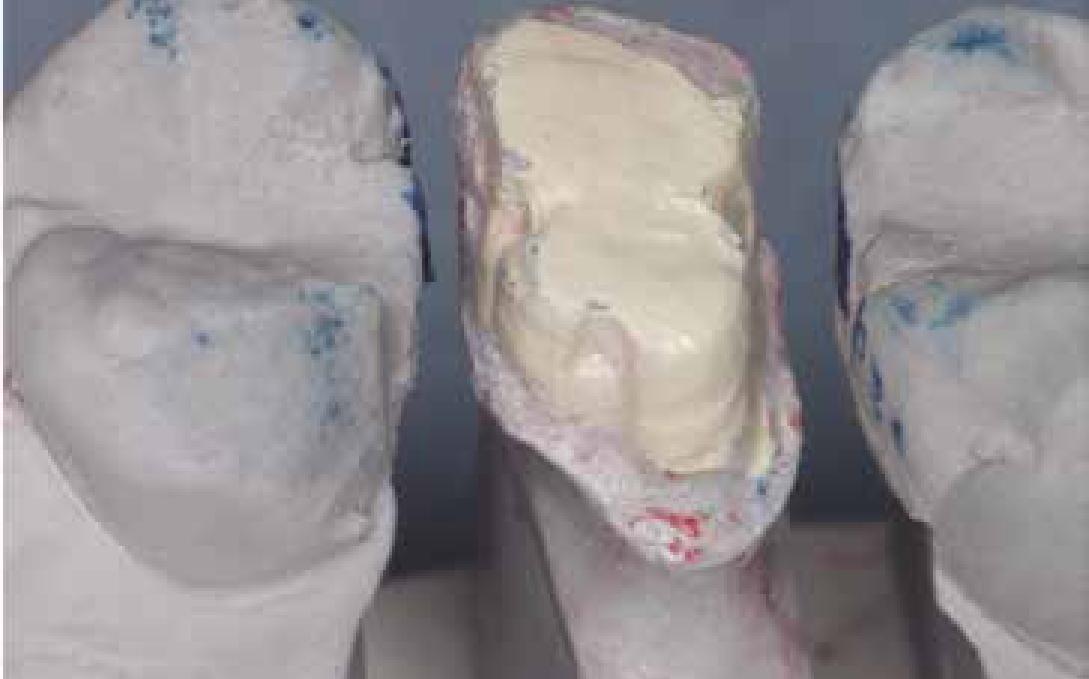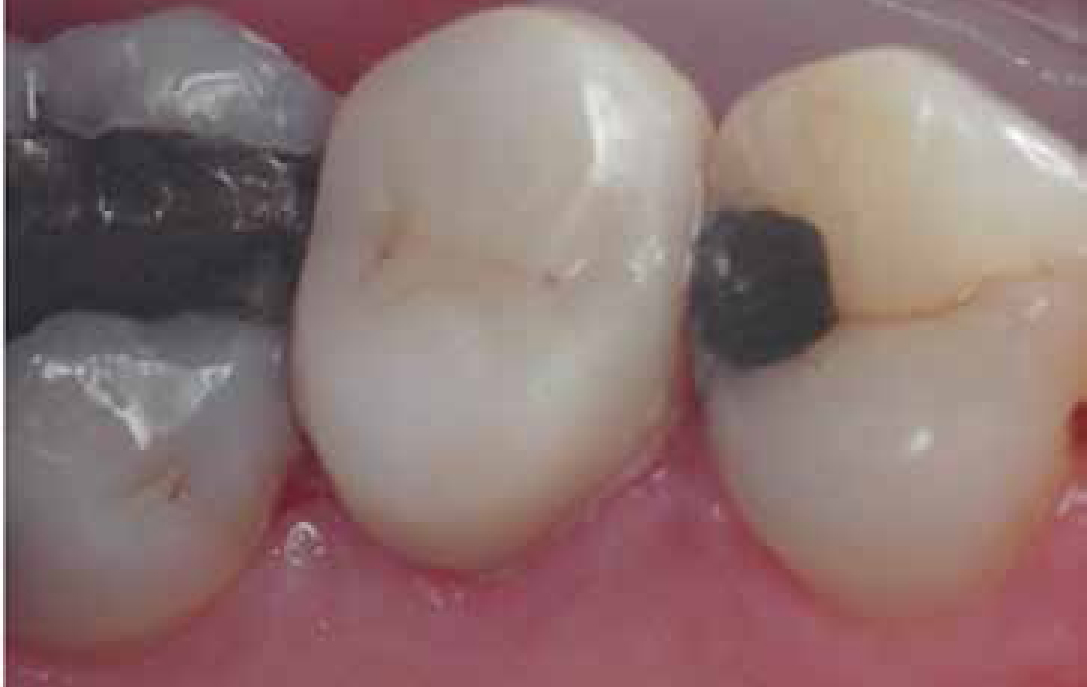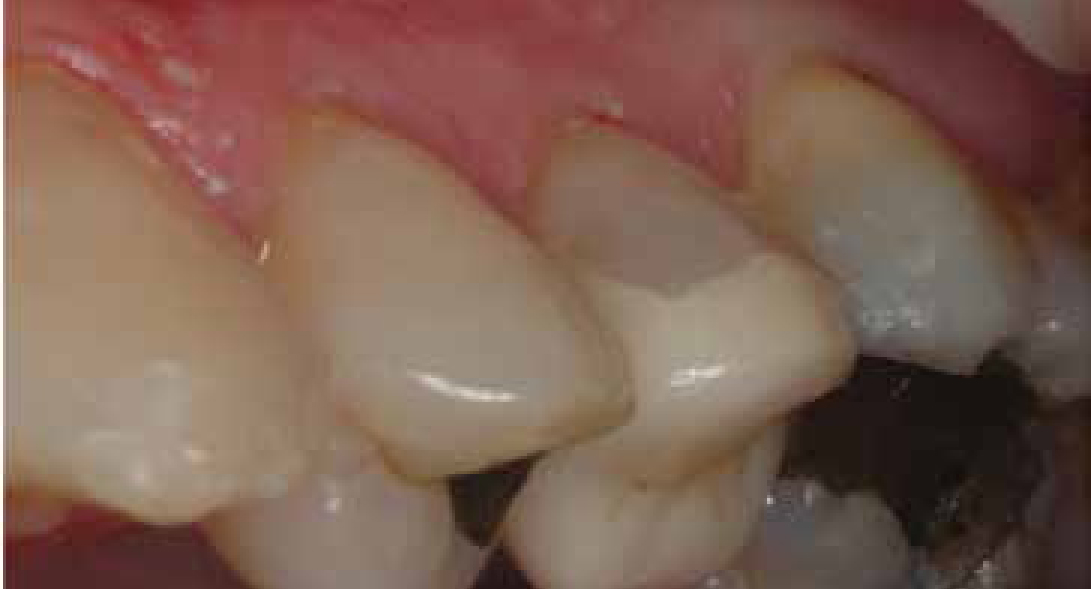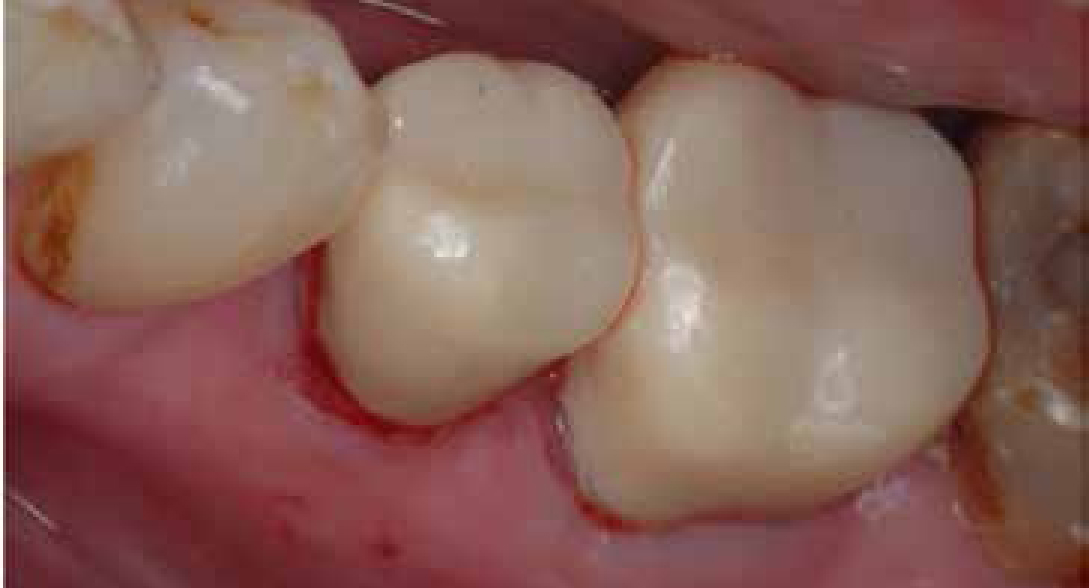Article
Three-quarter crowns are placed on posterior teeth where further prevention of fracture is indicated, be this in a root-filled tooth, or, simply, one where protection of remaining tooth substance is indicated. The three-quarter crown is a less invasive restoration than the full crown, given that the buccal aspect of the tooth is not prepared, other than for cusp coverage of circa 1 mm, and the placement of a reverse bevel. Three-quarter crowns (which actually cover four-fifths of the tooth's surfaces1) are retained by grooves on the mesial, distal and occlusal surfaces which effectively perform the same function as the buccal cusp in the full crown preparation.1 Parallel preparation of the interproximal surfaces provides good retention. Contra-indications include teeth with short clinical crowns, when the crown of the tooth is very tapered, or where gross caries is present.2 A further contra-indication is a patient who does not wish to show the small ‘lip’ of gold covering the buccal cusp. In this regard, a contemporary three-quarter crown could use a suitable contemporary ceramic material, and zirconia would appear to fulfil the characteristics required, namely high strength in thin section and capable of being finished to the knife edge margin, which is a feature of the three-quarter crown preparation. Full thickness zirconia restorations may be manufactured with an occlusal thickness of 0.6 mm, which may be considered to be compatible with high strength. Similar comments may apply to the full crown, formed in zirconia rather than gold.
Figures 1, 2 and 3 present a root-filled upper second premolar tooth which had a composite core retained by a fibre post, restored by a three-quarter crown formed in full-thickness zirconia, albeit with a shade and translucency mismatch because of the discoloration of the tooth and less translucent zirconia, although more translucent zirconia materials are now becoming available. However, it was considered that preparation of the buccal cusp in this tooth for a full crown would have removed any residual tooth substance. Figure 4 presents two full thickness zirconia full crowns (at placement visit) which replaced defective gold crowns in a patient who did not want metal in her mouth.





